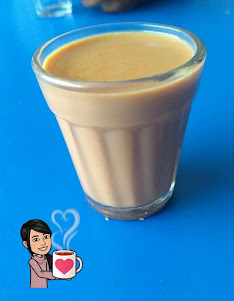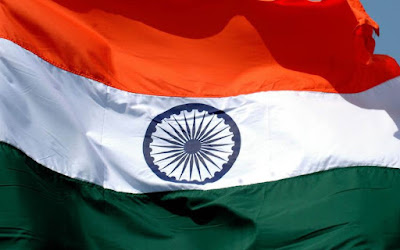Tea Break
When I get bored in my study or in my work, I take a tea break; by this break, I can work and study more faster. But there are lots of side effects of like reduced iron absorption, heartburn , nausea, poor sleep, and hyperacidity. If we take only 2 cups daily, then there are no issues, so we should be aware of this.
In India, there are various types of tea; here, I shortlisted some types
- Black tea :
Tea. Black tea has a higher level of oxidation than oolong, green, or white tea. The taste of black tea is generally more robust than that of less oxidized teas. CTC (Crush, Tear, Curl) and Orthodox processing methods are used to prepare black teas. The CTC technique is economical and successful for creating higher-quality leaves with consistent dark colors from lower and medium leaves.- Green tea :
Green tea is a China beverage that has been linked with many Asian cultures. Green tea is prepared from Leaves that have been processed with very little oxidation. Green tea extracts are now utilized in various drinks, health foods, nutritional supplements, and cosmetic products. Green tea has spawned a plethora of variants in the regions where it is produced. Variable growth circumstances, horticulture, production processes, and harvesting time might cause these cultivars to differ significantly.- White tea :
White tea is a lightly oxidized tea primarily produced and harvested in China, particularly in the Fujian and Zhejiang provinces. Taiwan, India, Northern Thailand, and Eastern Nepal have all lately raised it. White tea is made from not only bud but also leaves of the Camellia sinensis plant, which is native to China. To avoid oxidation or additional tea processing, the leaves and buds can wither in natural sunlight before being lightly handled. The term "white tea" comes from the tiny silvery-white hairs covering the tea plant's unopened buds, giving it a whitish look. The beverage itself is not colorless but pale yellow.
- White tea :
Origin of Tea :-
Tea's origins have been a source of contention for ages. Tea is linked to many stories, myths, and legends that have traveled across civilizations over thousands of years. Tea consumption dates back to approximately 1737 AD, according to reputable sources.
Another tale claims that Prince Dharma was struck by Divine grace and traveled to China to preach Buddha's teachings. Dharma committed never to sleep during his nine-year journey to prove himself worthy of such a noble task. He was overtaken by tiredness at the end of the third year and was about to fall asleep when he accidentally grabbed a few leaves from a wild tea plant and began chewing them. Dharma felt considerably more alert due to the stimulating characteristics of tea, and he credited the power he found to stay awake for the remaining six years of his apostolic journey to these leaves.
Another Indian legend recounts the origins of tea, which is said to be a creation of Lord Buddha himself. Lord Buddha is supposed to have accepted a vow to concentrate for nine years without stopping during a journey to China. But after a while, he fell asleep. He was believed to have ripped off his eyelashes and flung them on the ground when he first awoke. According to legend, the eyelashes took root and germinated into plants with eyelid-shaped leaves. He then consumed the plant's leaves, and his tiredness dissipated. This plant he brought to China was supposed to be the first tea plant.
Although tea's popularity in Ancient India is uncertain, tea growing in India has an equivocal history. Tea was once thought to be a wild plant in India, produced by locals in various locations.
Hanuman was dispatched to the Himalayas to bring the stimulant Sanjeevani tea plant for medical use, according to the Ramayana, which is thought to be the earliest recorded mention of tea in India.
“Tea appears to have no drawbacks,” says Katherine Tallmadge, MA, RD, LD, a representative for the American Dietetic Association. “I believe it's a fantastic alternative to coffee. Tea, for starters, has less caffeine. It's generally known that the chemicals in tea, known as flavonoids, are beneficial for the heart and may help prevent cancer.”
- Tea can help you in maintaining weight.
- Green tea may help you see better.
- White tea help to look younger.
- Tea keeps our hearts healthy.
- Tea may be helpful in the prevention and treatment of neurological disorders.
- Green tea has been shown to increase the density and strength of bones.
- It May help to fight against diabetes.
- Here Are 6 Hatke Chai In Pune You Have To Try This Monsoon Season
- Tandoori Chai:
- Choclate Chai:
- Gulab Chai :
All the chai lovers in the house put their hands up in the air for Gulabi Tea. Yes, my dear reader, you read it correctly. Pink tea is hitting the city with some deep love. Baner Katta is not your usual chai wala adda but a lot more. We ordered the Gulabi Chai first, which was served to steam hot and tasted rich with dry fruits like pasta, almonds, and other nuts. This Kashmiri Chai has a rich, thick, and creamy texture. It is heavily milky, low on tea flavor, embracing a solid shot of cardamom. If you compare it with our forever loved and pampered Indian masala chai, you’ll be biased towards it as we are the chai republic that loves its tea with familiar inmates like adrak or elaichi. But, we’d say that you must try this new potion refreshing and has a hatke taste.
- Basundi Chai:
Raosaheb Shindencha Basundi Chacha located at Sadashiv Peth makes the authentic Puneri Basundi chaha. What's so special about this chai? It’s made only with two elements! Milk and tea leaves. Yes, you read that right! The milk is boiled to the extent that it becomes sweet, and the chai is kadak! If you’re a fan of kadak chai, look no further! For just Rs 10, you can get a hot cup full!
- Kalimiri Chai:
This one might be a little off-center for most, but Kalimiri Chai is nothing but pepper chai. The chai is brewed with a spoonful of peppercorns that slowly releases its flavor as you boil it. The unique characteristic of this chai is that it has a lovely spiciness after every sip. The chai is also suitable for you if you’re suffering from a cold or a sore throat. We agree that this might not be everybody’s cup of tea, but it is worth a try! You can also try the Sulemani or 5 Spice Chai from the menu.
- Irani Chai:
A breakfast staple and the best possible combo with bun maska chai, Irani chai is indispensable in the city. But we found a place in Yerwada that twists the regular Irani chai. Move over to Tandoori Chai because we have Hyderabadi-style Irani Dum Chai for you! The Irani cafe has fabulous taste. The tea is brewed in a covered vessel on a low flame to create the ‘drum-like infusion of flavors. Thickened milk, enriched with maca, is then added to the fragrant brewed tea to give you a thick and sweet cup of chai that will instantly refresh you!. The Irani cafe has developed their own website so we can easily find restaurants near us. Irani cafe has various franchises over Maharashtra. So website maintenance is no easy task.
What is some interesting fact about tea?
- Tea is the world's second-most-drunk beverage (after water), and it is the preferred beverage of India and China, the world's two most populous countries. Surprisingly, these two are also the top two producers, and they are ranked in the same order.
- Over 3 billion cups of tea have been drunk every day. For every adult individual on the planet, that equates to one cup each day.
- Tea is considered among the healthiest of beverages with its flavonoids.
- Black tea, white tea, green tea, and oolong tea are the most famous tea varieties. The healthiest teas are white and green tea. All of these, however, come from the same plant species.
- The British brought tea to India in the nineteenth century. It is predominantly grown in Assam, Darjeeling, and the Nilgiris (all in India's northeast) (in the south). These Indian tea varietals are regarded as among the best in the world.
So I also like to drink a cup of tea in my break to refresh myself.
-Written by Purva B Bhosale





Comments
Post a Comment